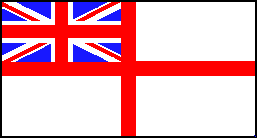

CLICK ON PICTURES OR LINKS TO SEE FULL SIZE IMAGES
THE TYPE 12 FRIGATE HMS PLYMOUTH
Why not visit the ship and support the work of the Warship Preservation Trust?
The Royal Navy Anti-Submarine Frigate HMS Plymouth saw action from the beginning to the end of the Falklands conflict. This now famous frigate is preserved afloat at Birkenhead, Merseyside.
She was the last of the Type 12 Rothesay Class anti-submarine frigates built for the Royal Navy and was launched in July 1959. She had a top speed of 28 knots and her main armament consisted of twin 4.5 in guns mounted forward. In 1969 at refit she had the original 40mm secondary armament replaced with Sea Cat anti-aircraft missiles and was provided with a WASP Helicopter.
In 1982 when the Argentinians invaded the British Falkland islands her next tour of duty was to have been three months in the West Indies, but she quickly adapted to the urgency of the situation and steamed the 8000 miles south as part of the task force ordered to recapture the Islands. At South Georgia on 21st April 1982 HMS Plymouth took part in the first direct action against Argentinian forces when herWasp helicopter fired a missile at the submarine Santa Fe as a result of which she was beached by her crew. The Santa Fe was thus the first enemy warship to be put out of action.
|
|
|
Plymouth later helped carry out the bombardment of enemy positions ashore prior to troop landings. The first stage of the liberation of the Falklands had been completed - and only three weeks after the Argentinian invasion, but the most dangerous period was to come, when she escorted the waves of landing craft to the beaches. Argentinians aircraft attacked Plymouth and the other ships in San Carlos Water, which became nick-named "Bomb Alley". HMS ANTELOPE and HMS ARDENT were severely damaged and later sank, and Plymouth was hit by four bombs and cannon fire from attacks by five aircraft. A fifth bomb went through the funnel. None of the bombs exploded and there were no serious casualties in spite of a serious fire below decks when a bomb blew up a depth charge on the flight deck. Bravery by members of the crew ensured that other nearby depth charges were put overboard before they could explode in the heat. The "cooking" time under such circumstances was only 45 seconds.
On 21st June 1982, Plymouth left the Task Force to return home to the Rosyth base in Scotland, via Ascension Island, having steamed 34,000 miles since leaving the UK. During her time at war, she fired 909 of her 4.5in shells and nine Sea Cat missiles, destroying five enemy planes. She was one of the few ships to be involved in every action of the campaign.
In June 1989 when her service career was over she might have gone the same way as others before her and become a target ship, to end her days rather gracelessly, if still providing a valuable service to the Navy. However, she was saved by the Warship Preservation Trust and the generosity of the British public for the nation.
|
|
The same Wardroom of HMS Plymouth. Today it is availible for hire for private functions as well as being on view to the public during normal opening hours. |
This ship, with the submarine HMS ONYX, which also played a major, and in parts still secret, role in the Falklands conflict, is preserved afloat, with others, by the Warship Preservation Trust at the Corn Warehouse quay, Birkenhead, and can be visited daily, subject to an admission charge.
HMS PLYMOUTH SPECIFICATIONS |
Built by Devonport Dockyard at Plymouth 1958
Royal Navy Type 12 ASW Frigate
These classes were the first of a long line of RN postwar frigates (apart from the destroyer
conversions types 15 and 16) and can be considered as the best ASW escorts of their era.
the 6 Whitby's were in effect the prototypes of every RN ASW Frigate up until the Type 21
and type 22 two decades later. The Rothsay's originally differed only in internal layout
but were later refited to virtual Leander standard.
Propulsion
- Steam Turbine 30000shp 2 shafts speed 29kts max
- Displacement 2150tons Standard 2560tons deep
- dimensions 112.7 m x 12.5m x 3.9m
Radars
- Type 275 Mk6M GFCS tracker (type 903 MRS3 GFCS in modernized Rothsay's)
- Type 262 MRS 1 GFCS tracker (STAAG FC)
- Type 974/978 navigation radar (type 978 navigation radar in modernised Rothsay's)
- Type 293 low angle air/sea search (Type 994 surface/air search set in modernised Rothsay's)
- Type 277 Height finding radar (deleted in modernised Rothsay's)
Sonars
- Type 174/177 Search sonar
- Type 170 Attack sonar
- type 162 bottom profiling sonar
Armament as completed
- 1 Mk6 twin 4.5"/45 DP gun
- 1 Mk2 STAAG twin 40mm/60 AA (later replaced by 1 Mk9 40mm/6O AA)
- 2 Mk10 limbo ASW mortars
- 14 21" ASW TT (on some Whitby's only removed after a short time)
Armament of Rothsey class after modernisation
- 1 Mk6 twin 4.5"/45 DP gun
- 1 Mk10 limbo ASW mortar
- 2 20mm/83 AA
- 1 GWS 22 quad Seacat system
- 1 Wasp helicopter
Propulsion
Radars
Sonars
Armament as completed
Armament of Rothsey class after modernisation
SHIPS YEAR OF COMMISSIONING